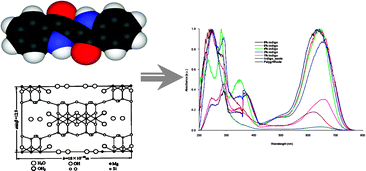Indigo dye waste recovery from blue denim textile effluent: a by-product synergy approach
Abstract
Textile dyeing effluents present a substantial environmental problem, primarily because such effluents contain high concentrations of waste

* Corresponding authors
a
Materials Research and Technology Institute, The University of Texas at El Paso, El Paso, USA
E-mail:
dwambuguh@miners.utep.edu
Textile dyeing effluents present a substantial environmental problem, primarily because such effluents contain high concentrations of waste

 Please wait while we load your content...
Something went wrong. Try again?
Please wait while we load your content...
Something went wrong. Try again?
D. Wambuguh and R. R. Chianelli, New J. Chem., 2008, 32, 2189 DOI: 10.1039/B806213G
To request permission to reproduce material from this article, please go to the Copyright Clearance Center request page.
If you are an author contributing to an RSC publication, you do not need to request permission provided correct acknowledgement is given.
If you are the author of this article, you do not need to request permission to reproduce figures and diagrams provided correct acknowledgement is given. If you want to reproduce the whole article in a third-party publication (excluding your thesis/dissertation for which permission is not required) please go to the Copyright Clearance Center request page.
Read more about how to correctly acknowledge RSC content.
 Fetching data from CrossRef.
Fetching data from CrossRef.
This may take some time to load.
Loading related content
